Weeds that Attract Bees
Before you get over zealous in removing every unwanted weed in your garden – consider if they are important weeds that bees like. You may be throwing away their lunch! Bees care not at all whether we consider a plant to be a desirable specimen or a weed. In this article, I reveal some of the most common weeds for bees that grow naturally and why you may want to leave them – at least for a little while.
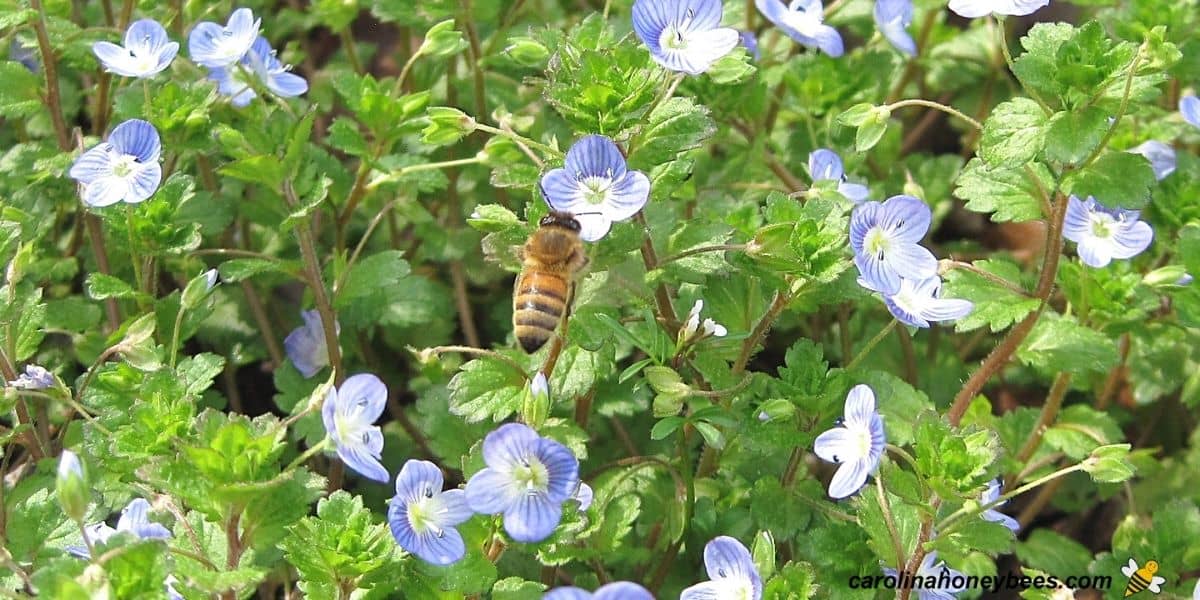
To be at its best, a honey bee colony needs good nutrition. That is one reason I enjoy planting a variety of flowers for bees. In this way, I am adding yet another nectar or pollen source to those already available.
Are Weeds Good for Bees?
Of course, not everyone can be happy with a yard full of weeds– no matter how many bees they feed. I certainly understand that. Most of us want a balance and there is no harm in having a grass lawn-if that is really important to you.
However, if you can leave some of the flowering weeds that provide nectar or pollen for bees-all pollinators in the region will benefit. I often see native Bumble bees foraging on weed flowers early in the morning.
This can be done in a small plot – it does not have to be a large area. These hardy plants can even be a valuable part of your garden – some are beautiful in bloom.
For the areas where weed control is a must, search out a bee friendly weed killer (or grass killer). And only apply it when and where it is really needed.
Common Weeds Bees Like
These are some of the most popular weeds that help bees by providing nutrition. Many grow in several regions across the country. Do you have some weeds not listed that are native to your area and really attractive to honey bees? If so, let me know.
Dandelion Plants (Taraxacum spp.)

Dandelions are an important early food source for bees. They are found in bloom from March – October in many regions.
In warmer areas, a few dandelions are often found nestled in warm corners of the yard – even in Winter. This is important because there are few Winter plants that feed bees.
Dandelion flowers do play a role as an early food source providing both nectar and pollen. However, they are not always the first blooming food plant for bees. It depends on your region and climate.
You may hear some people say that dandelions are not a perfect food source for bees. This may be true but no one plant is perfect. My goal is a variety of food sources for my bee colonies.
Pollen from the flowers is not that great but the plant is a good nectar source. If you can leave a few dandelions around to add variety to the bee diet that is a great thing.
However, you do not have to leave a lawn full of them. Instead consider leaving some natural areas with a variety of weeds that bees like. And, if you do have an abundance – it make be time to consider making some dandelion salve?
Chick Weed (Stellaria media)
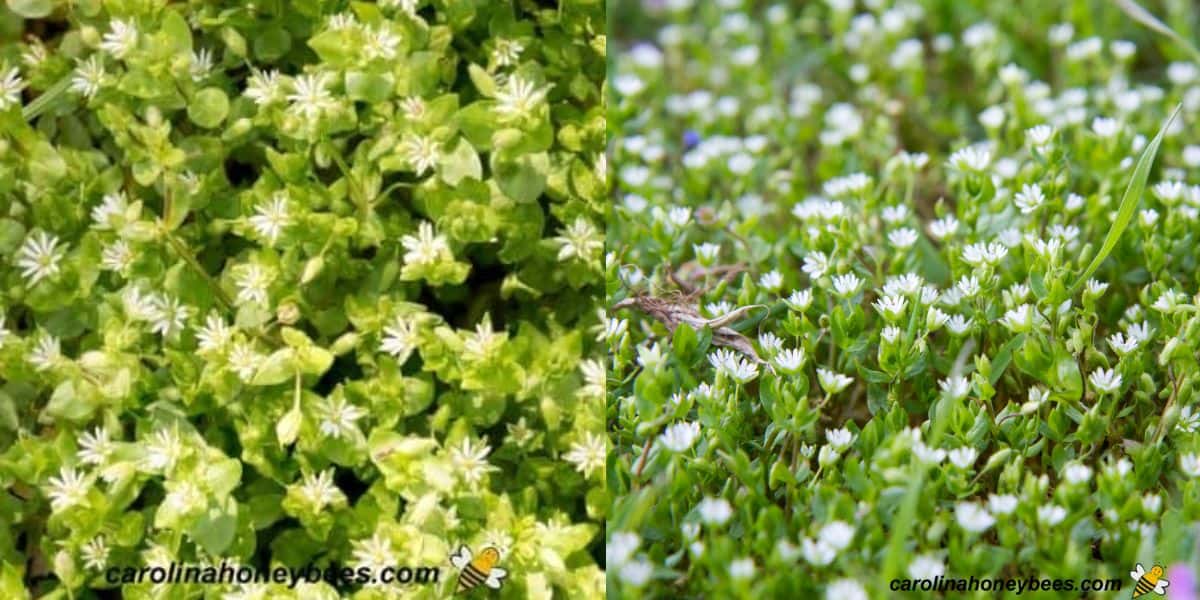
Chick Weed is a low growing cool season plant. In fact, it can be an invasive plant. Considered an annual, its foliage may stay green all year in warm climates.
It reproduces from seed. The small white flowers are only open for 1 day however the plant produces many flowers.
Common chick weed is mainly a nectar source for bees. Sometimes, both nectar and pollen is collected from the small flowers. This plant is better suited to a prairie or native area that is allowed to grow wild.
It is not uncommon to find chick weed in your yard early in the season. Then, once the grass starts growing it fades away. This has been my experience, we have chick weed near the barn but I only notice it is early Spring.
Henbit (Lamium aplexicaule)
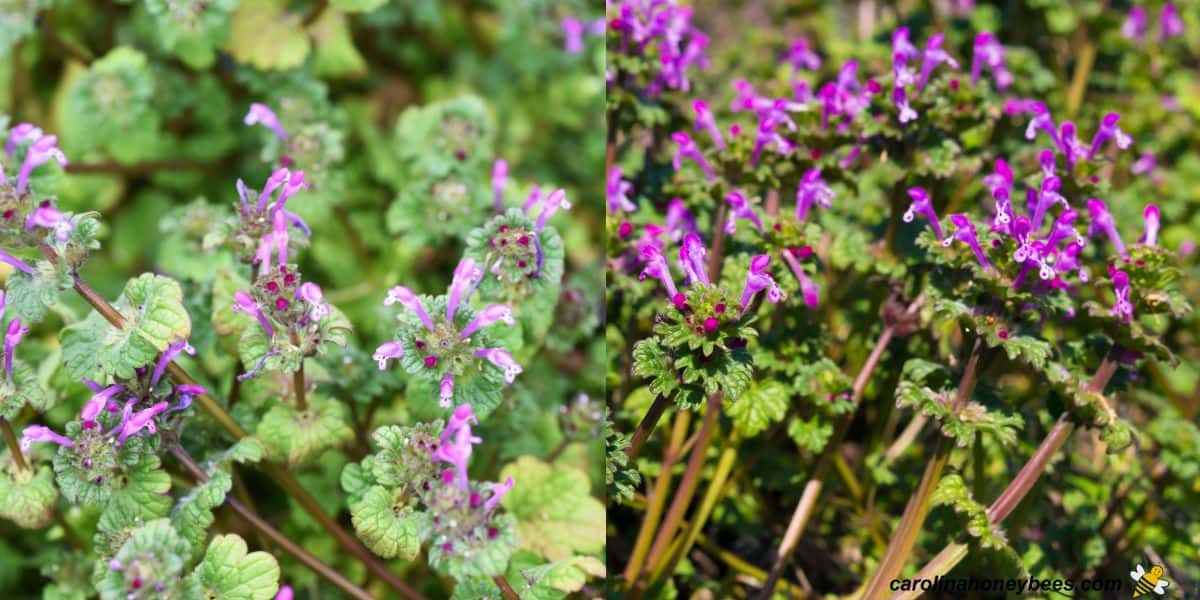
Henbit is a Winter annual that only lives for one season. Leaves emerge in the Fall and remain during the Winter months.
In late Winter, henbit blooms and produces seeds that will become the plants for next season. Henbit features long slender purple flowers and has heart shaped leaves with scalloped edges.
Shallow rooted, these plants are easier to remove by pulling them up before seed sets. However, you might want to consider leaving some in a few areas. They are important sources of nectar for bees.
Purple Deadnettle-(Lamium pupureum)
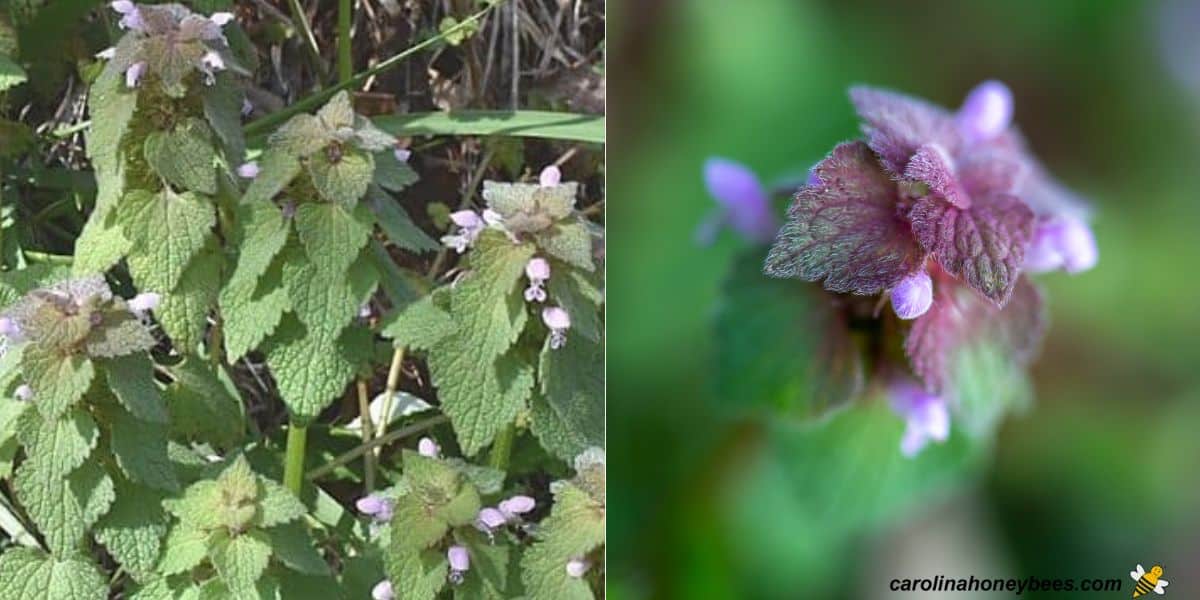
Purple Deadnettle is also a Winter Annual. It too is a member of the mint family (like henbit) and these two are often confused.
Having the same bloom time, henbit and purple deadnettle are often seen in the same location.
Both of these weeds attract bees in mass on warm Winter days. Providing important nectar and pollen to hungry colonies very early in the season-a time when not many plants are in bloom.
Pollen collected from deadnettle is bright red. The flowers of purple deadnettle (also called red deadnettle in Europe) are not as dark purple as those of henbit. A noticeable characteristic of deadnettle is the purplish leaves at the top of the plant.
Speedwell (Veronica persica)
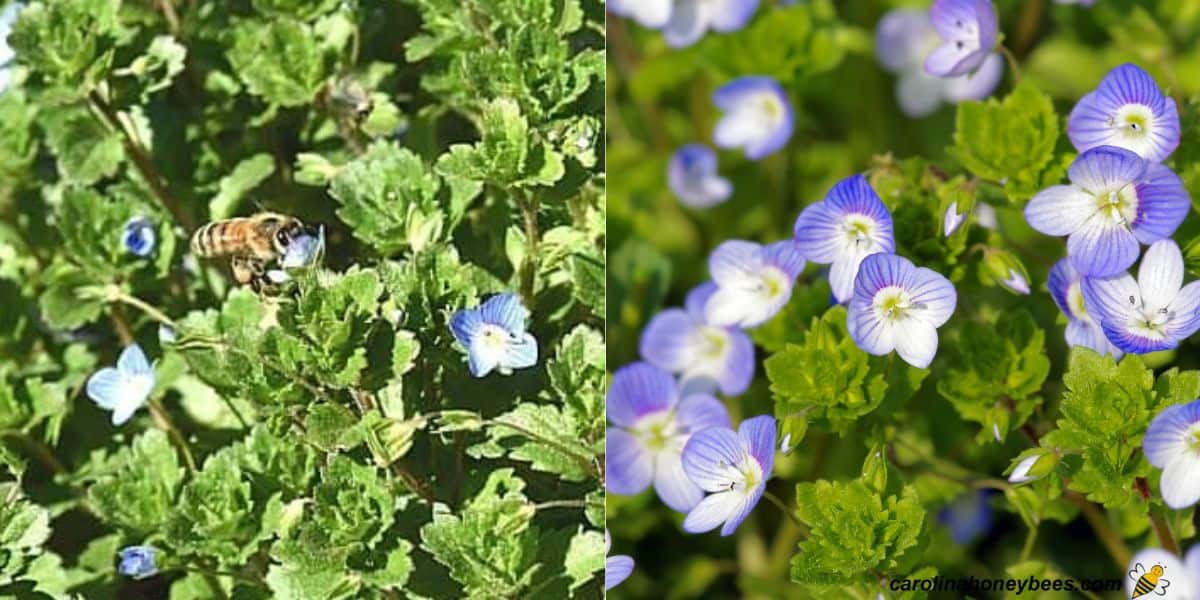
Speedwell is a low growing annual native to Asia. The plant grows 4”-12” long and blooms in late Winter or early Spring. It prefers partial to full sun and moist loamy soil.
Dainty blue single flowers open on sunny days. This flowering weed attracts small bees and some flies.
My patch of speedwell is covered with foraging honey bees on warm Winter days. Providing nectar and pollen, speedwell flowers are a beautiful addition to a natural area.

How Weeds Benefit Bees
Weeds are known for being rather hardy plants. Because they are tough, some of the late Winter/early Spring weeds provide valuable food for honey bees. This at a time when not much else may be in bloom.
Weeds can stand some cold temperatures and maybe a bit of frost. The ones in my garden often grow much better than I would wish.
As bees are coming out in late Winter/ early Spring, the colony is ravenous for fresh nectar and pollen. Even colonies that have good food stores still in the hive will actively gather fresh provisions. Warmer temperatures and lengthening daylight signal that Spring is just around the corner.
The foraging bees, work every day that weather allows. Fresh nectar coming in stimulates the queen bee fulfill her role and increase egg laying.
Fresh pollen gathered from many types of blooming weeds help feed developing baby bees. The colony is working hard to raise to build their population. More workers will be needed for the main honey flow in a few months.
Many regions experience wind in late Winter/early Spring. Weeds tend to be low growing so the bees can forage on them – even on Windy days.
This makes them a special food for bees during those marginal times of the year. Never spray or use sevin dust near bees – that includes blooming weeds.
Bees with a Red Dot on Their Head
New beekeepers and other bee lovers often see a curious sight. Why do my foraging bees have a red dot on their head – right between their eyes?
While it may seem that this is a fashion statement by the bees, it is not. What you are seeing is pollen from a weed!.
Depending on the flower structure of the plant they are working, sometimes the bee’s head comes in contact with pollen covered anthers. This results in a beautiful pollen dot on their head – right between the eyes.
FAQs
We can help honey bees and other pollinators because they often bloom and produce pollen and nectar even in harsh growing conditions.
While considered an invasive weed that most homeowners do not want, Creeping Charlie does provide nectar for insects.
In most cases, the purple weeds you are seeing are Dead Nettle. They are very attractive to bees.
A Final Word
Keep these ideas in mind and you may help a hungry bees colony. Resist pulling these weeds that bees like and use for food as long as you can in the late Winter. Even a few weeks delay until other things are in bloom.
Weeds can be a part of your bee garden design. It might be a weed to us but to a hungry bee… it’s breakfast!

